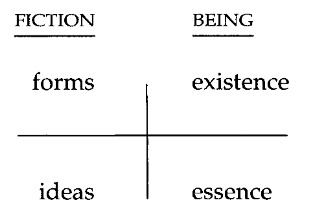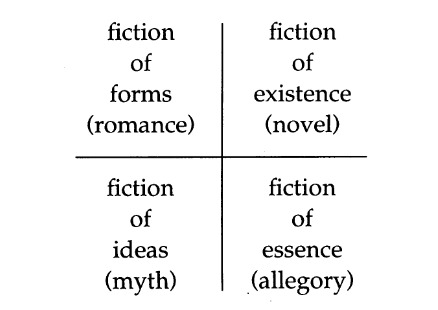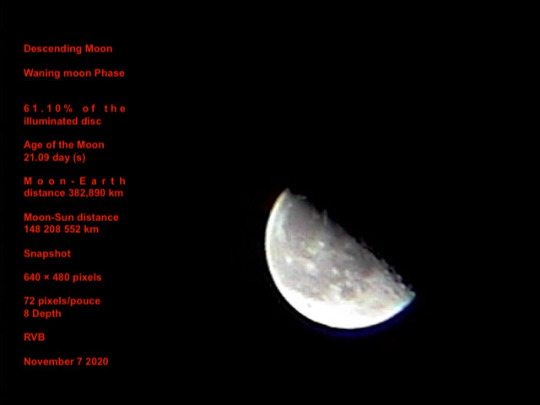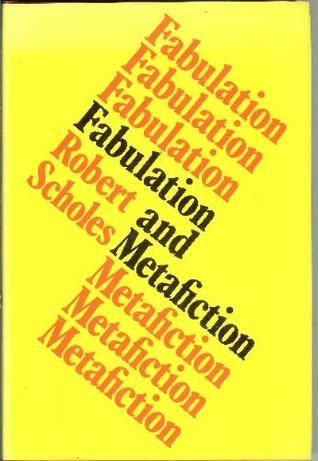#robert scholes - metafiction
Text



3 notes
·
View notes
Text
Kinda a note to myself about story structure...need to add notes about erasure
I have a habit of looking up the paratext of books I kinda know, but don’t know well, especially around book adaptations. I’m the type that loves Behind the Scenes and probably have watched a ton of BTS more than some of the shows.
And yeah, umm. CW, gay erasure coming up. Iunno if this is CW, but yeah... you’re about to be frustrated. I need to share it with someone.
The first time I was introduced to Forster was when I was younger, and full disclosure, I really didn’t like Howard’s End. I thought it was boring as !@#$. No, I’m not kidding. I hated a lot of it. Might not have helped that I watched it with my parents who like to think they are art snobs, but that’s questionable in my PoV.
That given, when I ventured into doing story structure, I found him again through writing books, and I kinda like a lot of his writing advice, though some of it isn’t great, the take down of Percy Lubbock, I did enjoy after reading Percy Lubbock’s Craft of Fiction (1921). Aspects of the Novel, is not that bad, but it gets used by the structuralists later as the pinnacle of horrid writing advice repeatedly (Say like Robert Scholes’s Fabulation and Metafiction (1979, BTW, in the backslide era after the 1960′s) who manages to go on a good clip of hating women, and gays in the same two pages in a WTF rant, comparing the 3/5 act structure to cishet male version of sex.), probably because Forster is gay. But in all honesty, I don’t think this is fair. I mean I’ve read a lot of writing advice books to track down the history of it, etc, and Forster is not the worst of the lot. (I’m kinda leaning towards Freytag to be honest, with Aristotle up there, but in this particular case, it was the times does work for Aristotle, though Aristotle was not a storywriter and also a terrible person--which to be clear yet again, is not excusable with “It was the times”. Maybe some of my ire is at how horrible they were. But some of the advice is things they did were rotten.)
So, I was watching Lady Chatterley's Lover, so looking up the Paratext, and I found that the story was likely influenced, or wholesale stolen from Forster. !@#$. Forster had a novel, “Maurice” and yeah, it’s very close to the plot of Lady Chatterley’s Lover.
Only privileged people say crap like people can’t steal ideas. Privileged people steal ideas from marginalized people and then scrub the diversity.
Anyway, the reason I was writhing is such pain was because I saw the damage people had tried to do to Forster and to try to take his ideas and scrub them either out of literary canon, discredit him, snobbily call him a Modernist without commercial value, or steal his ideas without credit. And the thing is that I’ve seen this behavior before with other writers in the Literary canon. They ignore or shoot them out, not for their ideas, but the identities they cannot control.
If you don’t have Forster, you have Lubbock, who came out gay later, and they quietly erased all credit to him. (I feel stabby about that one too--I don’t agree with him on a lot of things, but seriously, I hate plagiarism and erasure and while how he demonstrated his examples were probably rotten, some of his ideas are not?).
If you don’t have Lubbock, then quiet erasing of Woolf’s commentary on Lubbock. Because if you mention Woolf as anything other than a Modernist, you have to mention Lubbock and her reaction to his text. (She didn’t hate it, she was iffy on it. More like Hate-love relationship to the text.)
If you don’t have Lubbock, then you have hating on and actively trying to erase Gertrude Stein. (The amount of free for all on her isn’t fair, really... I mean without her a lot of conventions you think of as normal wouldn’t be in film, plays or books.) But hate on the openly lesbian (And don’t worry, hating on women, in general, is a theme with structuralists, either directly or indirectly. Such as Field mentioning how he knew some great modernists in one version of his book, but then hating Stein anyway, even if she influenced their work.--;;)
If it’s not hating on gays, women, lesbians, then it’s also hating on Jews. !@#$. Of course they tried to erase Freytag for a time, but I think he came back with credit later. Introducing erasing credit for Lajos Egri, whom Syd Field didn’t credit until the last edition of his book when he was in poor health and died shortly after, as if 2008-ish was a terrible time to tell everyone you got some of your ideas from a Jew. (Yes, some sarcasm, considering the treatment of women in Field’s text even through 2008)
We haven’t even gotten to the erasure of PoCs who often didn’t get writing advice books published, so had to do it through memoirs. The amount of queer memoirs by fiction writers I had to read to delve deeper is kinda high. (If you’re queer, your icon’s advice are in memoirs and autobiographies).
Honestly, this part irks me about story structure study. The amount of discovered painful erasure. I love undoing the erasure, but discovering the erasure itself is always a moment of “Why?” And also “Why did that matter to this author?” (Rowe though I don’t understand... why plagiarize so hard and then warp the ideas of the original authors?)
The fun parts of it are that I love that people philosophically think about it and it’s not as brutal as say, discussing the tea trade which the first 3/4 makes me happy and then the last 1/4 makes me incredibly sad. As an import/export item, Story structure is pretty harmless, maybe more harmless than humans themselves. This is because while story structure is often imposed destructively, people also still remember their old story structures, change and adapt, go back and forth with them, so the colonized never really get colonized with story. And to me, the best parts of humanity aren’t when we are hating each other, but when we’re thinking, examining, and consensually sharing with each other.
But the dark side of humanity is still in the study of story structure. So I’m crying for Forster. I’m not exactly in love with his fiction, but I do like his writing advice. Someone else has to feel my unending pain at how shafted this guy got by the writing community. People hate him for being openly gay. But why not celebrate some of the good things he contributed to us?
(Maybe I don’t love his attitudes towards colonialism, but I still can appreciate Maurice? We need nuance.)
BTW, I would 100% watch an adaptation of Maurice.
8 notes
·
View notes
Text
The unloved file.
Or the ugly duck of wikimedia commons for a moment.
Yeah!This is the start of the workshop season.
Crescent Moon and ash.

Moon crescent with earthshine:
The bright region is directly illuminated by the sun, while the rest of the Moon is illuminated by light reflected from Earth.
What happened when I did a research?
That's what I'm going to explain.
A significant number of months have passed. So at the time of writing this text, I am extremely clumsy because it is a huge step forward in many areas and it is a bit overwhelming (in a good way) so i have to understand the moves to be made ( I could compare to this if someone had seen / it's so close to what )
A philosophical theory or philosophical position is a view that attempts to explain or account for a particular problem in philosophy
The use of the term "theory" is a statement of colloquial English and not reflective of the term theory.
While any sort of thesis or opinion may be termed a position, in analytic philosophy it is thought best to reserve the word "theory" for systematic, comprehensive attempts to solve problems.
To try to explain my project, I will base myself on a remix with the term METAFICTION
It is the explanatory literary version that will take on its full meaning.
Metafiction is a form of fiction which emphasizes its own constructedness in a way that continually reminds the audience to be aware they are reading or viewing a fictional work.
This is self-conscious about language, literary form, and story-telling, and works of metafiction directly or indirectly draw attention to their status as artifacts and it is frequently used as a form of parody or a tool to undermine literary conventions and explore the relationship between literature and reality, life, and art.
The term 'metafiction' was coined in 1970 by William H. Gass in his book Fiction and the Figures of Life and, he describes the increasing use of metafiction at the time as a result of authors developing a better understanding of the medium.
This new understanding of the medium led to a major change in the approach toward fiction.
Theoretical issues became more prominent aspects, resulting in an increased self-reflexivity and formal uncertainty.
Robert Scholes expands upon Gass' theory and identifies four forms of criticism on fiction, which he refers to as formal, behavioral, structural, and philosophical criticism. Metafiction assimilates these perspectives into the fictional process, putting emphasis on one or more of these aspects.

Mini poster used to illustrate my abstract during the Educational Psychology and Astronomy for Mental health and Wellbeing training.
From 19 to 20 May 2022
My learnings was first, strange and very complicated, but what I can write about it is that you have to aim for the Moon: the Moon will be the best celestial object.
youtube
To follow.
Ps: top Image is one of several taken on a Moon vhs catching.
(so not the same like more under)
Ash light 2
5 notes
·
View notes
Text
Postmodernism in Relation to Modernism and Patricia Waugh’s Metafiction
Modernism emerged in Europe and America as a series of movements in the years between 1910 and 1930. Some of the prominent figures in the Modernist movement are Ezra Pound, Virginia Woolf, Bertolt Brecht, Pablo Picasso and William Faulkner (Habib 194). Modernist writers often produce literary works that perceive the world in a whole new light all while discrediting various old ideologies such as science, progress, rationality, civilization and imperialism (Habib 195).
Postmodernism, on the other hand, as said by Lethen, “the postmodern situation created the possibility to see modernism as a closed and rather rigid entity.” (Connor 113). Postmodernism refers to the idea of using new ways of thinking about thought. The process of transformation from modernism to postmodernism happened as the former idea no longer fits the society condition. Postmodernism has brought forth a variety of political changes and effects due to its unorthodox ideologies and some of the issues that arise in postmodernism are associated with certain movements and groups such as the feminist movement, gay rights movement, anti-globalization movement and more. In a way, postmodernism is attempting a paradigm shift of writing, progressing from the Modernists’ rigid notions of science and reason towards a more flexible and abstract way of thinking (Connor 115).
THE CONCEPT OF METAFICTION
The term ‘Metafiction’ was mentioned by Gass in his book ‘Fiction and the Figures of Life’. He further elaborated that the term is widely used as time passes as more authors has come to an understanding with the term (24). Later, Robert Scholes develops more on Gass’s theory and lists four forms of criticism that metafiction can integrate these viewpoints into the fictional process.
Metafiction revolves around the self-consciousness of fiction work on the fact that it is fiction and highlights how there is actually a very thin line between the two worlds of fiction and reality (Waugh 2). It is recognized as a method of narration which is used by authors in their literary works. This concept has been going around for quite some time despite only been given the term ‘metafiction’ not too long ago. It was primarily found to be coined in William H. Gass’s essay. The prefix meta actually connotes ‘about’, thus the term metafiction brings the literal meaning of ‘about fiction’. Waugh further defines metafiction as below:
“Metafiction is a term given to fictional writing which self-consciously and systematically draws attention to its status as an artefact in order to pose questions about the relationship between fiction and reality.” (2)
From the given definition by Patricia Waugh, metafiction is a literary technique purposely used by authors as an attention grabber and it too serve the purpose to make the readers think more about the indistinct line which exists between fiction and reality.
Waugh explained in her book that the circumstance of literary works being construed by the use of language could help us in understanding the real world. This is due to the reason that the dissemination of knowledge is facilitated through the use of language (3). In other words, language is a large part of the reality world thus literary fiction which obviously uses language in content construction has enabled people to comprehend the structure of reality world. Hence, that could be why metafiction questions the relationship between the two worlds made separated by most people; reality and fiction. Arguably, metafictionists shared a point of view that both fiction and reality are interconnected with one another.
As a metafictionist, Waugh believed that every novel has the tendency to contain metafiction literary device. She added that whoever learns about metafiction will be able to figure out the novels’ identity as they will ultimately be able to notice the shared nature in fiction works. Novels has no exact standard form and there is no one definite way to define novels. In a way, it thus is unstable. The unstable elements in novels are then highlighted through metafiction literary device and next aid in uncovering that novels are a jumble of things put into one. For instance, everyday historical forms of communication (which utilizes different forms of language) as such memoirs, journals, histories, journal records, etc. can be found in novels (5).
PAIRS OF CRITICS IN METAFICTION
Werner Wolf, in his books states that metafiction can be further broken down into four pairs of critics that can later be combined with each other (37). The first point is the explicit and implicit metafiction. This pair comments on “its own artificiality and is easily quotable”. Explicit metafiction can be described as a “mode of telling”. This concept can be observed through the way a narrator explains the story as the story is ongoing.
Implicit metafiction on the other hand foregrounds the topic through various techniques such as metalepsis. Metalepsis is the usage of a figure of speech in which the word or phrase is used in a new context. Implicit metafiction relies on the reader’s abilities to be able to recognize these techniques in order to conjure a metafictional analysis. Explicit metafiction is described as a “mode of telling” whereas implicit metafiction can be described as “mode of showing” (Wolf 37).
The second pair of the form is the direct and indirect metafiction. Direct metafiction creates a reference within the text that one is reading. Opposite to this, indirect metafiction uses metareferences externally to the text that one is reading. Such an example would be parody. One cannot make a parody, either a genre in literature or in movies, without an external reference to another book or another movie. Since there is an established relationship between the current book one is reading and the other book that was referred to in the book indirectly, indirect metafiction does influence the copy that one is reading.
The third pair is called as the critical and non-critical metafiction. This pair is originated regularly in postmodernist fiction which targets to find the inauthenticity or the fictionality of a text critically. Non-critical metafiction, on the other hand, does not criticize or undermine the fictionality of a text, and it claims that it can be used to “suggest that the story one is reading is authentic” (Wolf 38).
Last but not least, the final pair in metafiction is the generally media-centered and the truth-fiction-centered metafiction. Generally, media-centered circles around the metafiction that deals with the media quality of fiction or in the form of narrative. However, in some cases, there are additional focus on the reliability or the ingenuity of a text. The idea of a story being authentic would be an example of truth-centered metafiction.
WORKS OF METAFICTION
Despite only being used in the late 20th century, and is commonly interconnected to post-modernism literature, there have been multiple works of literature in the past centuries that intentionally reference the fictional nature of their texts that distinguishes the line between fiction and reality.
An example of metafiction used in earlier works of literature is the 16th century play, Romeo and Juliet by William Shakespeare. In Act I, the prologue of the play, Shakespeare intentionally reveals to the then-audience, and current readers of the classic story, that the whole play is fictional (27). Even going as far as spoiling the ending of the play in the prologue, it was then understood that the reason why Shakespeare dissolved the line between fiction and reality was because the playwright believed that most people who came to see the play were uneducated and uncivilized. Presuming that if the audience had not been informed beforehand that the play was fictional and if the audience truly did think that the actors who portrayed the characters were dead in real life, it was feared that a ruckus and a riot would break out during the ending, therefore causing a state of panic. Thus, the prologue was written so that the readers, or the audience of Shakespeare’s time, will be able to distinguish that the play is fictional and not real.
Although it fits the concept of metafiction, Romeo and Juliet fails to portray metafiction in the context of postmodernism, as it was written and referenced in the late 16th century. However, the concept of metafiction can be seen in Shakespeare’s writing of the story’s prologue, where he intentionally reveals that the story is a work of fiction and should not be taken literally.
Since metafiction has been a key instrument in experimental fiction, there has been a surge in works of metafiction in recent postmodern literature. Works that are considered postmodern are usually comprised of those that rely on narrative techniques such as having an unreliable narrator, engaging in multiple critical theories such as the reader-response theory, deconstruction approach and metafiction.
An example of a literary work that can be considered postmodern metafiction is the novel Lunar Park by Bret Easton Ellis. The book is a mock memoir that was published in 2005 and it is considered a postmodern horror literary work that displays Ellis’ personal early life in the beginning of the book and continues on with fictionalized aspects of his life, therefore making the story neither entirely fictional nor entirely real. The novel is also written in a way that the ‘I’ is ambiguous and that it can refer to either the author and the narrator or both. Baelo-Allué comments on the inclusion of metafictional devices, citing that most of the aspects of the novel were taken from Ellis’s previous works, and that the author also includes sources that are both high and low, referencing songs, TV shows, Barrie’s Peter Pan, Shakespeare’s Hamlet and Stephen King in the novel (111).
CRITICISM AND LIMITATIONS OF METAFICTION
Even though the term ‘metafiction’ is new, the concept of metafiction is as old as time. The work that contains metafiction elements can be traced back to as early as the 14th century, such as “Canterbury Tales” by Geoffrey Chaucer (1387) up until recent fiction works such as “The Hitchhicker’s Guide to the Galaxy” by Douglas Adam (1979). The term has been widely argued by parties that are either against it or support it as a genre that is supposedly a rebirth to a novel’s genre. Some of the anti-postmodernists claim that metafiction signifies the “death or exhaustion of the novel as a genre” (Gass 5).
Other theorists also often face the problem of differentiating the definition which either refers to modern metafiction or if it covers all works that contain self-reflexivity. One of the theorists, John Barth, briefly explains metafiction as a “novel that imitates a novel rather than the real world” (161). Authors and writers who use metafiction in their writing attempts to blur the line between fiction and reality for the reader. However, Barth firmly states that by using metafiction in the writing, it only emphasizes to the reader that what they are reading is a fiction and nothing more (161).
CONCLUSION
Metafiction is a literary device that draws the line between reality and fantasy, as well as dissolving the line and leaving the readers in a state of limbo with the ambiguity of the aspect of fiction and non-fiction of the literary work. It is apparent that metafiction has played a huge part in postmodern literature, whereby authors of many literary works have been experimenting on their writing using this concept and its various techniques to create a fresh and distinctive work of literature.
ENGL 4620 - Literary Criticism
Sem. 1, 2019/2020
Section 2
Name of Lecturer: Miss Nurul Fateha
Group 6
Khairun Nuha Binti Khairul Bazli (1528896)
Sarah Afifah Binti Abdul Basir (1529504)
Siti Mariam Ahmad Jamil (1525996)
Jarzreen Binti Jaffri (1529040)
Works Cited
Barry, Peter. Beginning Theory - an Introduction to Literary and Cultural Theory: Fourth. Manchester University Press, 2017.
Connor, Steven. Postmodernist Culture: an Introduction to Theories of the Contemporary. Blackwell, 2006.
Gass, William H. Fiction and the Figures of Life. New York: Alfred A. Knopf, 1970.
Habib, Rafey. Literary Criticism from Plato to the Present: an Introduction. Wiley-Blackwell, 2011.
Scholes, Robert. Fabulation and Metafiction. Chicago: University of Illinois Press., 1979.
Shakespeare, William, and Sidney Lamb. Romeo & Juliet: Commentary, Complete Text, Glossary. Cliffs Notes, 1999.
Torrijos, María del Mar Ramón. "Bret Easton Ellis’s Controversial Fiction: Writing between High and Low Culture." (2012).
Waugh, Patricia. Metafiction – The Theory and Practice of Self-Conscious Fiction. London, New York: Routledge, 1984.
Wolf, Werner, ed. The Metareferential Turn in Contemporary Arts and Media: Forms, Functions, Attempts at Explanation. Studies in Intermediality, 2011.
Wolf, Werner. "Metareference across Media: The Concept, its Transmedial Potentials and Problems, Main Forms and Functions". Metareference across Media: Theory and Case Studies. Studies in Intermediality 4, eds. Werner Wolf, Katharina Bantleon, and Jeff Thoss. Amsterdam: Rodopi, 2009.
1 note
·
View note
Photo

RIP Robert Scholes (1919 - 2016).
Speaking of Tzvetan Todorov (see prev. post), it appears that the man who wrote the foreword to The Fantastic, the American literary critic Robert Scholes, also died.
His death was apparently not worthy of the Wikipedia death timeline[1].
Above, the cover of Fabulation and Metafiction (1979).
2 notes
·
View notes